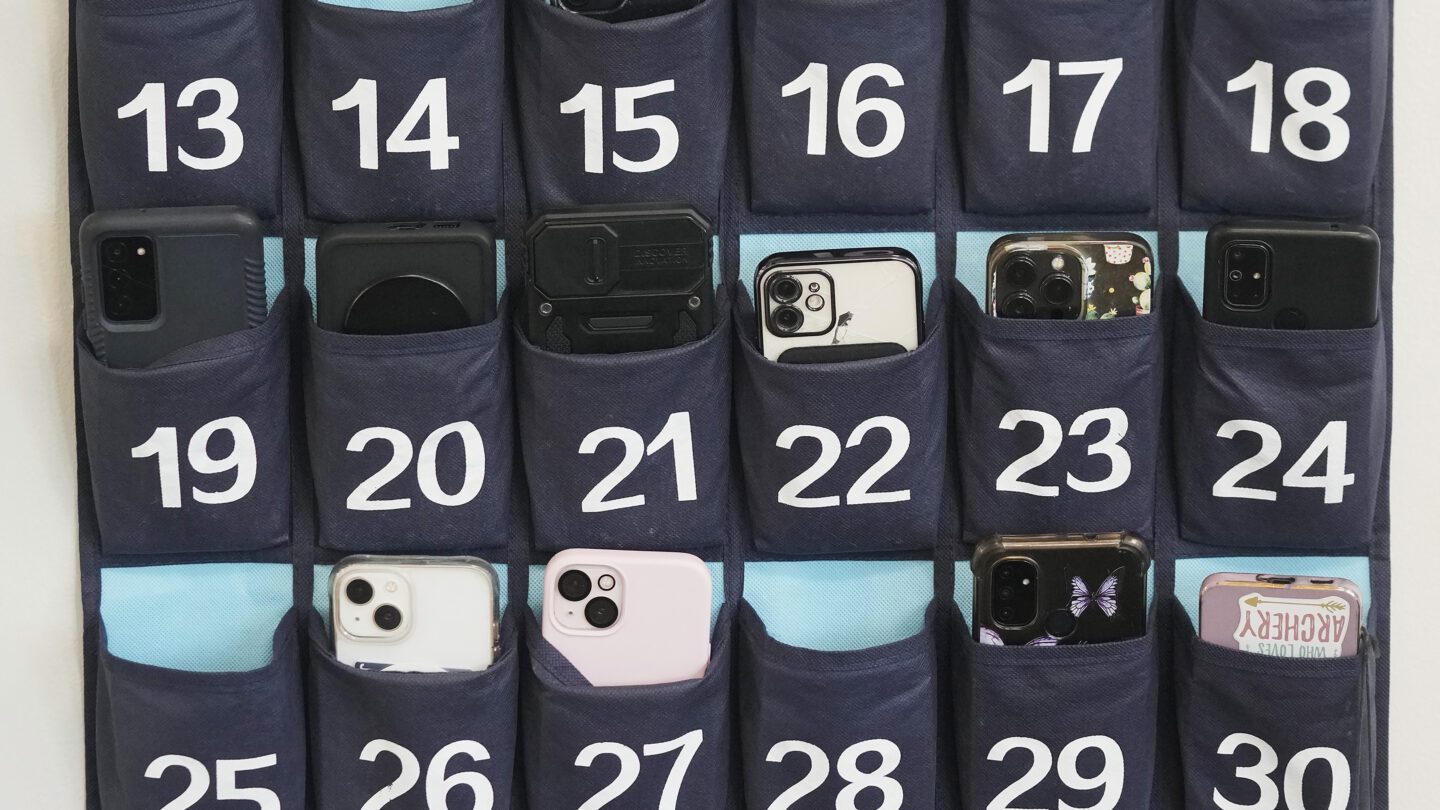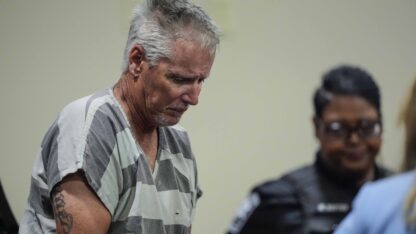Huddling for safety in classrooms as gunfire rang out, students at Apalachee High School texted or called their parents to let them know what was happening and send what they thought could be their final messages. One student texted her mother to say she loved her, adding, “I’m sorry I’m not the best daughter.”
The Georgia school shooting that left four dead and nine injured last week was every parent’s worst nightmare, and one that highlights potential downsides to efforts among states, school districts and federal lawmakers to ban or restrict access to cellphones in classrooms.
The moves to restrict phone use in schools have been driven by concerns about the impact screentime has on children’s mental health and complaints from teachers that cellphones have become a constant distraction in the classroom. But those opposed to the bans say they cut off a lifeline parents have to make sure their children are safe during school shootings or other emergencies.
“The fact of the matter is parents and families cannot rely on schools to effectively communicate with us in times of emergency, and this has happened time and again,” said Keri Rodrigues, president of the National Parents Union, an education advocacy group. “There’s a whole host of reasons why parents are deeply concerned about whether or not they’re going to get timely information about whether or not their kids are safe.”
Nationally, 77% of U.S. schools say they prohibit cellphones at school for non-academic use, according to the National Center for Education Statistics. But that number is misleading. It does not mean students are following those bans or all those schools are enforcing them.
The restrictions have been trumpeted by both Republican and Democratic governors who rarely agree on other issues.
In Arkansas, GOP Gov. Sarah Huckabee Sanders launched a program for school districts to apply for grants to purchase pouches for students to keep their phones in during the school day. In California, Democratic Gov. Gavin Newsom has urged school districts to restrict cellphone use and is weighing whether to sign legislation that would require schools to enact restrictions.
“I’d hate to see another school shooting be the reason that we bring TVs into the classroom and then disrupt our children’s education,” Newsom said Friday. “Because, in essence, that’s what a cellphone is equivalent to — bringing a TV into the classroom and disrupting the ability to get quality academic time.”
But for many students caught in the Apalachee shooting, having access to their phones was the only way they could communicate with loved ones during moments they feared could be their last.
“I love you. I love you so much. Ma I love you,” Junior Julie Sandoval texted her mother. “I’m sorry I’m not the best daughter. I love you.”
Nearby, Sandoval said, another student was on the phone telling their mother, “They’re shooting up the school! They’re shooting up the school!”
But advocates of school phone restrictions warn that allowing access to phones during shootings or other emergencies could put students in even more danger.
“What’s even more important to me is their safety,” said Kim Whitman, co-founder of the Phone-Free Schools Movement, a group that advocates for schools to adopt policies keeping cellphones off and away from students. “If my child was on the phone with me and they missed guidance from the teacher because they were distracted by their phone and they weren’t safe, that’s a worse scenario in my mind.”
Whitman said she understands the concerns about keeping parents informed and that’s why a key part for any phone-free school is being proactive in communicating about emergencies.
Balancing safety and parents’ concerns guided a cellphone ban at Grand Island Senior High, the largest high school in Nebraska, which rolled out a new policy in January that requires students to keep phones out of sight and in their bags or pockets, silenced or off during school hours.
“One of the essential questions that parents asked us was, ‘What if Sally or Johnny doesn’t have their phone if, God forbid, an active shooting happens or there is some sort of crisis in the building?’” said Jeff Gilbertson, the school’s then-principal who now runs leadership training at the state Board of Education.
But the school does lockdown training to remind students of the dangers that phones can cause during emergencies.
“We coach our kids to keep phones silenced. You don’t want to be talking on the phone when we’re in lockdown, because that would reveal your location to an active shooter,” he said.
Students in other school shootings have used cellphones to alert authorities or their parents. During the 2022 school shooting in Uvalde, Texas, that killed 21 people, a fourth-grader begged for help in a series of 911 calls. Students at Marjory Stoneman Douglas High School in Parkland, Florida, sent parents and posted chilling videos during the 2018 shooting that killed 17 people.
The Apalachee school shooting was a painful reminder for Brandi Scire of why she got a cellphone for her daughter, now a high school sophomore in Broward County, Florida. Both her children went to schools nearby Marjory Stoneman Douglas High School during that mass shooting.
Scire’s son’s school was on lockdown and thought it was a drill until she texted him on his phone. Scire purchased a cellphone for her daughter the following year because of that.
Broward County schools now require students to keep their phones stored away and in airplane mode, but Scire has told her daughter to keep her phone on and with her.
“It’s not about me texting my daughter during regular school or anything like that,” Scire said. “It’s a safety measure and I’m sorry, I cannot let that go.”









